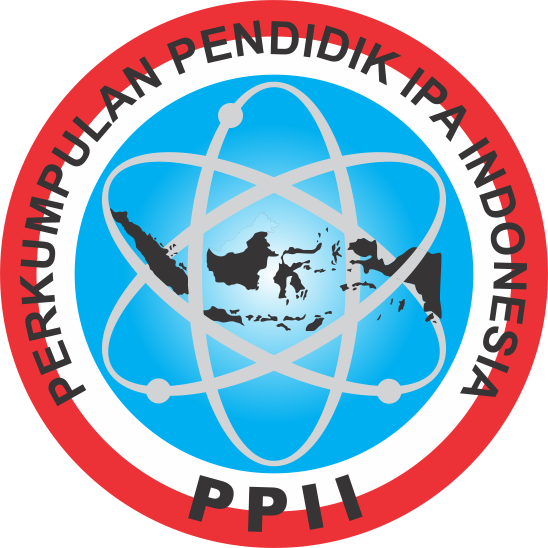Digital Technology in STEM Education: Coding and Programming as a Base-line
(1) Universiti Teknologi Malaysia
(2) Sokoto State University, Sokoto
(3) Universitas Negeri Makassar
(*) Corresponding Author
DOI: https://doi.org/10.26858/semnaspendipa.v1i1.26181
Abstract
Full Text:
PDFReferences
Birzina, R., & Pigozne, T. (2020). Technology as a Tool in STEM Teaching and Learning. Rural Environment. Education. Personality. (REEP) Proceedings of the 13th International Scientific Conference, 13(May), 219–227. https://doi.org/10.22616/reep.2020.026
Brown, P. R. (2017). Work in progress: From scratch-the design of a first-year engineering programming course. ASEE Annual Conference and Exposition, Conference Proceedings, 2017-June.
Byers, A. (2016). Science Teachers “Speak Up” About Technology in the Classroom. Retrieved August 21, 2021, from http://blog.nsta.org
Capraro, R. M., Capraro, M. M., & James, M. R. (2013). STEM project-based learning: An integrated science, technology, engineering, and mathematics (STEM) Approach. Rotterdam, Netherlands: Sense Publishers.
Dogan, B., & Robin, B. (2015). Technology’s role in stem education and the stem sos model. A Practice-Based Model of STEM Teaching: STEM Students on the Stage (SOS), 77–94. https://doi.org/10.1007/978-94-6300-019-2_6
Ganfield, K., Stashkova, A., Lawless, J., Phillips, D., Pickersgill, C., & Fisher, S. (2014). Developing Applications with NetBeans IDE Release 8.0, (March), 606. Retrieved from http://docs.oracle.com/cd/E50453_01/doc.80/e50452.pdf
Guelton, S., Brunet, P., Amini, M., Merlini, A., Corbillon, X., & Raynaud, A. (2015). Pythran: Enabling static optimization of scientific Python programs. Computational Science and Discovery, 8(1), 44–50. https://doi.org/10.1088/1749-4680/8/1/014001
Ide, N. (n.d.). Manual For Using the NetBeans IDE, 1–19.
Imforgraphics. (2018). Benefits Of Technology Integration In Education Infographic. Retrieved August 21, 2021, from https://elearninginfographics.com/
Kalelioglu, F., & Gulbahar, Y. (2015). The effects of teaching programming via Scratch on problem-solving skills: A discussion from learners’ perspective. Informatics in Education, 13(1), 33–50.
Kuhlman, D. (2013). A Python Book. A Python Book, 1–227.
Long, R. (2020). The Rise of Roblox : Opportunity for Education ?, (March).
Loganathan, P, Alwi, M. A., Romainor, N, Talib, C.A, Hanri, C., Maimun, A., & Kang, H. S. (2019). Students’ Chemistry Learning Process Through VisualProgramming Language: A Preliminary Study, International Journal of Recent Technology and Engineering (IJRTE), 8(IC2), 509-514
Ninjas, T. (2020). Why Should Children Learn to Code Through STEM Education And How Do They Do It? Retrieved August 18, 2021, from https://medium.com/turing-ninjas
Oluk, A., & Korknaz, O. (2016). Comparing Students’ Scratch Skills with Their Computational Thinking Skills in Terms of Different Variables. International Journal of Modern Education and Computer Science, 8(11), 1–7. https://doi.org/10.5815/ijmecs.2016.11.01
RankRed. (2021). Best Programming Software For Writing Code. Retrieved August 21, 2021, from https://www.rankred.com/best-programming-software-for-writing-codes/
Roblox. (2019). All Educators. Retrieved August 21, 2021, from https://education.roblox.com/en-us/educators
Talib, C. A., Aliyu, F., Malik, A. M. bin A., & Siang, K. H. (2019). Enhancing students’ reasoning skills in engineering and technology through game-based learning. International Journal of Emerging Technologies in Learning, 14(24), 69–80. https://doi.org/10.3991/ijet.v14i24.12117
Uçak, E. (2019). Teaching Materials Developed Using QR Code Technology in Science Classes. International Journal of Progressive Education, 15(4), 215–228. https://doi.org/10.29329/ijpe.2019.203.16
Vaca-Cardenas, Azucena, L., Bertacchini, F., Tavernise, A., Gabriele, L., Valenti, A., … Bilotta, E. (2015). Coding with Scratch: The design of an educational setting for Elementary pre-service teachers. Proceedings of 2015 International Conference on Interactive Collaborative Learning, ICL 2015, (September), 1171–1177. https://doi.org/10.1109/ICL.2015.7318200
Victoria, K. (2018). What is STEM? A beginner’s guide to STEM education. Retrieved August 20, 2021, from https://teachyourkidscode.com/
Yang, D., & Baldwin, S. J. (2020). Using Technology to Support Student Learning in an Integrated STEM Learning Environment. International Journal of Technology in Education and Science, 4(1), 1–11. https://doi.org/10.46328/ijtes.v4i1.22
Article Metrics
Abstract view : 321 times | PDF view : 47 timesRefbacks
- There are currently no refbacks.
Copyright (c) 2021 Corrienna Abdul Talib, Faruku Aliyu, Ramlawati Ramlawati

This work is licensed under a Creative Commons Attribution 4.0 International License.







 muh.alhamsatnur@unm.ac.id/ semnas.pendipa@unm.ac.id
muh.alhamsatnur@unm.ac.id/ semnas.pendipa@unm.ac.id